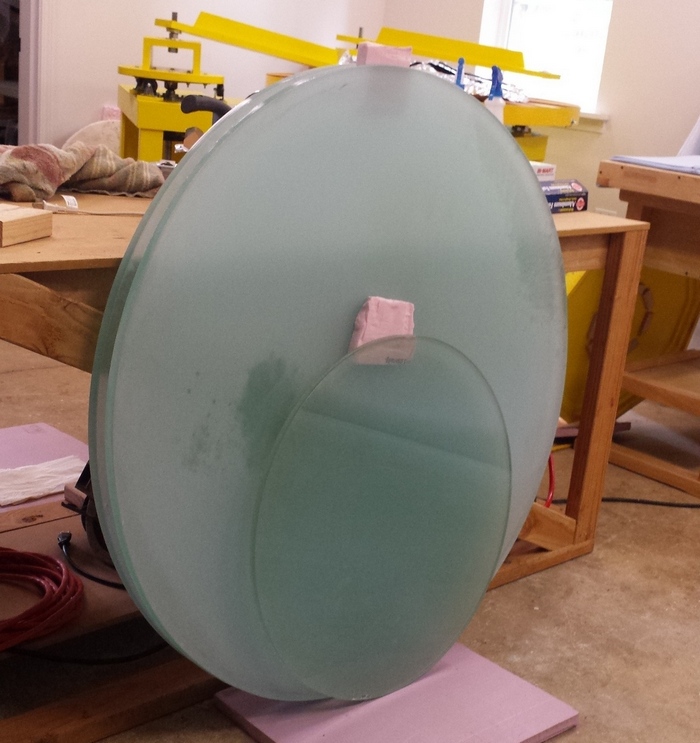



It’s simply wonderful when ideas come together to create something new: super wide angle views with more aperture, short stubby scopes - feet on the ground observing with lightweight meniscus mirrors, silvered primaries coupled with super fast focal ratios and Night Vision devices producing Hubble like views.
At the center of these ideas is the meniscus mirror, a thin curved constant thickness piece of glass. It’s not as if meniscus glass hasn’t been seen before. We amateurs first saw meniscus correctors in Lawrence Braymer's 1954 Questar telescope inspired by Dmitri Dmitrievich Maksutov’s optical design. Today in the professional realm, there are a number of major telescopes with meniscus shaped primaries of 8 meters.
I’ve been exploring meniscus mirrors for years, receiving a 13.2 inch F3.0 slumped blank from Richard Schwartz in 2000 which I completed in 2008 after hearing from Frederick Gae, a French amateur, that F3.0 worked with a coma corrector. I built the 13 inch ZipDob to explore compact folding designs and to test meniscus mirror technology.
Astronomy is like life. The more you open your eyes the more surprises you’ll see. The most profound surprises are the silent ones that unexpectedly tap your shoulder. The panoramic composition of multiple deep sky objects backed by considerable aperture leaves visual memories that I can never forget. First light discoveries like the Pleiades Bubble, the Andromeda Twist and subsequent astonishing observations of IFN (Integrated Flux Nebulae), commonly thought to be far beyond visual detection at the eyepiece.
Thin meniscus mirrors is an answer for soaring glass prices, another problem that the telescope maker faces. Thin glass cools quickly and is incredibly lightweight though the diameter to thickness ratio challenges conventional thinking.
The enabling technology for meniscus mirrors is the computer controlled kiln. Amateur telescope maker and inventor David Davis built his own giant kiln. Slumping obviates the need for rough grinding – quite the chore in larger sizes. Lucky us – we get to start right in on smoothing the surface, then polishing. The challenge lies in parabolizing fast mirrors, not dealing with how thin they might be.
At the same time that I was completing the 13.2 inch F3.0 meniscus mirror and ZipDob telescope, Russ Genet was founding the Altaz Initiative. The first meeting was in Portland, Oregon, June 2007 and included Russ Genet, Howard Banich, Richard Berry, Dan Gray and myself. I decided that my contribution would be exploring large, thin, fast meniscus mirrors up to 1-2 meters in diameter. These two 42 inchers are the culmination of 15 years of work alongside David Davis and others. Other participants include Olivier Guyon who works at the Subaru 8 meter telescope in Hawaii. He received a MacArthur genius award ($500,000) in part because of his slumping and mirror blank technologies. He favors repository materials to slump the mirror against.
Besides the obvious advantages to batching (if one mirror can be slumped, why not do two at the same time?), I hypothesized that since most of the time in mirror making is spent parabolizing the mirror, and most of the time spent parabolizing is learning how to handle the particular tool and mirror combination, that making a second mirror at the same time would entail little extra cost. The same tool was used for both mirrors, alternating back and forth between mirrors. Indeed, this turned out to be true for the twin 30 inchers. Whatever I did to the first mirror I did to the second mirror, no exceptions. The result on the second mirror was exactly as with the first mirror.
David Davis slumped the 42 inch mirrors at the same time as the 30 inch mirrors. Since the kiln was available and David was developing slumping and annealing kiln schedules, I thought it wise to develop the refractory molds, slump and anneal all the mirrors at the same time. While the 30 inchers were straightforward, the 42 inchers turned out to be much harder. One blank exploded with a loud bang heard in the house!
Specs on the 42 inches are: 42x5/8 inch [1067x16mm], 67:1 dia/thick ratio, 15/16 inch sagitta, 118 inch FL, F2.8, 80 pounds [36kg], 1st mold made in 2012, slumped 2016, resuming work in 2022.
Note that this will be my first mirror where the mirror's sagitta exceeds the blank's thickness, meaning that the back rim of the mirror is not at the mirror's center of gravity. Mirror support may be significantly complicated by this fact.
For details see my webpage recounting how the molds were made and mirrors slumped.
David Davis offered to help with preliminary smoothing. We did some machine grinding (the same machine that David used to grind his 60 incher), some work with a concrete ring tool using diamond embedded grinding wheels, and some glass on glass grinding:
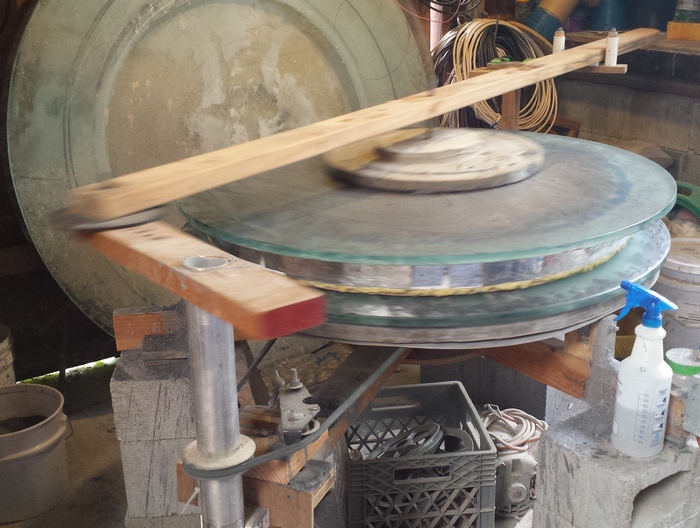
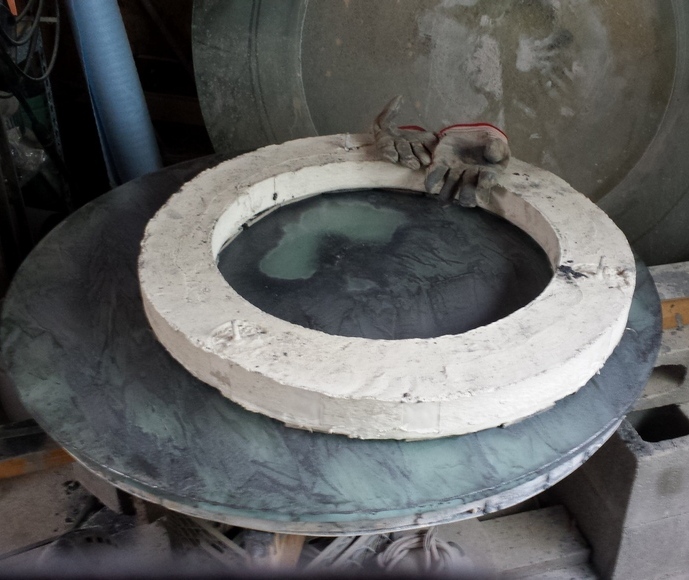
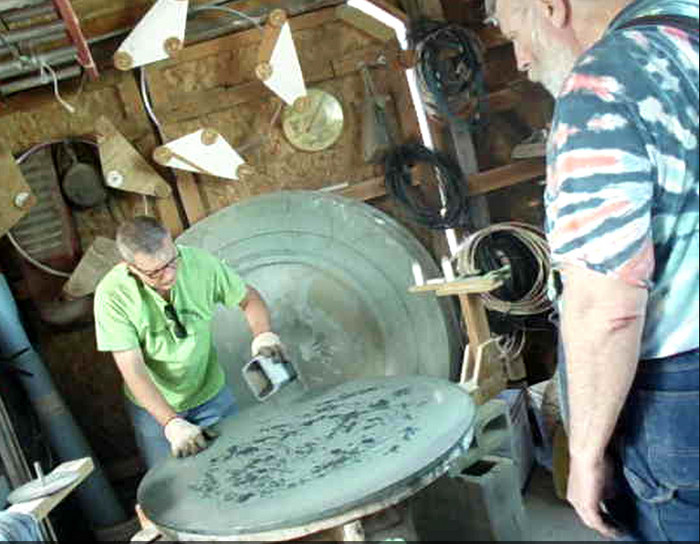
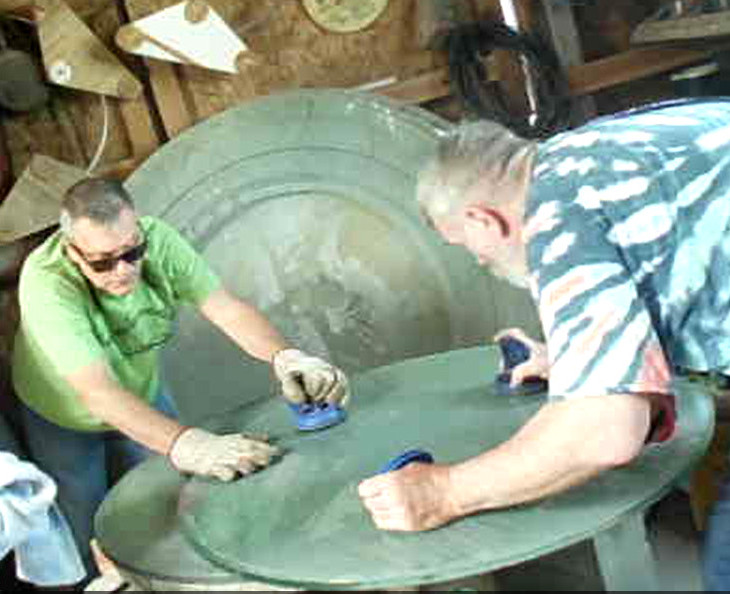
While I slumped the 30 inchers and 42 inchers at the same time, I made the mirrors, created and built the telescopes, and observed through them one at a time. The idea is to learn from each mirror and scope.
These will be my 8th and 9th meniscus mirrors. Previously I made:
These mirrors look to bend three times worse than the 30 inchers. This will be the great challenge to deal with, along with the bulk and weight. For details, see my bending discussion for the 30 inchers.
Since I do not know that I can complete these mirrors (I estimate the odds at 50:50), I call my project approach MANDY (Mirrors Are Not Dead Yet), inspired by the Mars Ingenuity Helicopter's project approach. Each stage of making the mirror depends on the success of previous stages; a failure at any stage means that the project fails. Consequently I will work on and worry about only the stage that is in front of me.
Success of course will be acceptable! Failure will be acceptable too because I will have learned something important and because I have my wonderful 30 inch F2.7.
To increase my observing potential, I am mulling over a new idea: setting up a binoscope for low power in one focuser and high power in the other. It's hard to see how to squeeze the ES 25mm 100 deg and TV Ethos 21mm 100 deg eyepieces close enough for human eye spacings even using Clive Milne's divergent eyepiece idea. Let's consider one eyepiece with one eye for lowest power widest angle in a binoscope. What to do with the other side of the binoscope?
Currently in my standard monoscopes I swap eyepieces back and forth. This takes time to swap the eyepieces and touch up the focus. But what I really want to explore is something I noticed many years ago with a quick change eyepiece setup (prefocused eyepieces on a slider): there is a short window, say 10-20 seconds where the change in views gives you something you don't otherwise see. I also noticed that I got more from the filtered views by using two eyepieces of similar focal length but with different filters. This comparison perspective faded quickly and was never present when I took the time to swap eyepieces. Some observers are doing this today with their binoscopes, for example, simultaneously using a OIII filter on one side and a H-Beta on the other side.
Am I wasting light by using a binoscope like this? This is parallel observing compared to serial observing. Maybe this would be a great way to use the light gathering power of two mirrors side by side.
Is greater value found in a unique 42 inch binoscope or in two separate 42 inchers with separate observers?
Here are the amateur made mirrors 40 inches [1m] and larger that I know of.
Useful and inspiring is Fabio Marioni's 40 inch scope made in 2016 that is a 24mm thick meniscus F5 mirror
In 1981 I looked through John Dobson's 24 inch, changing my amateur astronomy life. A year later I had built a 24 inch scope. Shortly after I heard this voice in the dark at a star party, "Mel Bartels! Mel Bartels!" It was Steve Swayze (who went to my high school but was younger). I had no idea that he'd gotten into telescope making in the Bay Area. He had an 18 inch at the time, rapidly building scopes of increasing size, culminating in his 40 inch. Trouble was, I didn't think that a scope larger than 24 inches would work in that the stars would be too blobby and even if the seeing was good that the Airy Disk would be resolved, meaning that the stars would not be pinpoint. Climbing that ladder to the eyepiece in Steve's newly minted 40 inch's then observing some NGC galaxy at 750x that looked as good as Andromeda in smaller scopes blew me away. Pinpoint stars.
Steve and I worked together to break the one meter barrier with the idea of making three 50 inch mirrors, selling one to finance the project and keeping the other two for ourselves. Alas we could never source the blanks and the idea was abandoned. Years later I am finally working on a similar sized mirror; perhaps a binoscope with the combined light of two 42 inch mirrors will break the barrier. Sadly Steve passed away from brain cancer recently. Thanks, Steve, for all your creativity and courage. I honor you by striving to be equally creative and couragous.
Since I am making two identical mirrors, it is tempting to consider a binoscope. I didn't do a binoscope on the twin 30 inchers because I really wanted to get a large scope into operation: making the binoscope secondaries would have taken too much time. This equation changes for the 42 inchers since I probably will have to make the extremely large secondary regardless.
Based on my experience observing with large binoscopes, I estimate the following with the caveat that binoscopes are really different beasts - it's not possible to make direct comparisons. Nevertheless:
Widest field possible given a nod to reasonable IPDs (17mm 102 deg eyepiece, a non-magnifying coma corrector) is nearly 0.6 degrees.
Here a quick design projection. The large footprint really stands out.

The secondary size will need to be 13 inches spherical for a folded design or 10 inches minor axis for a traditional 90 degree diagonal. With an eyepiece convergence angle of 5 degrees, I can likely use the Nikon 17mm 102 deg eyepiece, giving a field of view of a half a degree at 200x. First the folded design then the traditional 90 degrees design:
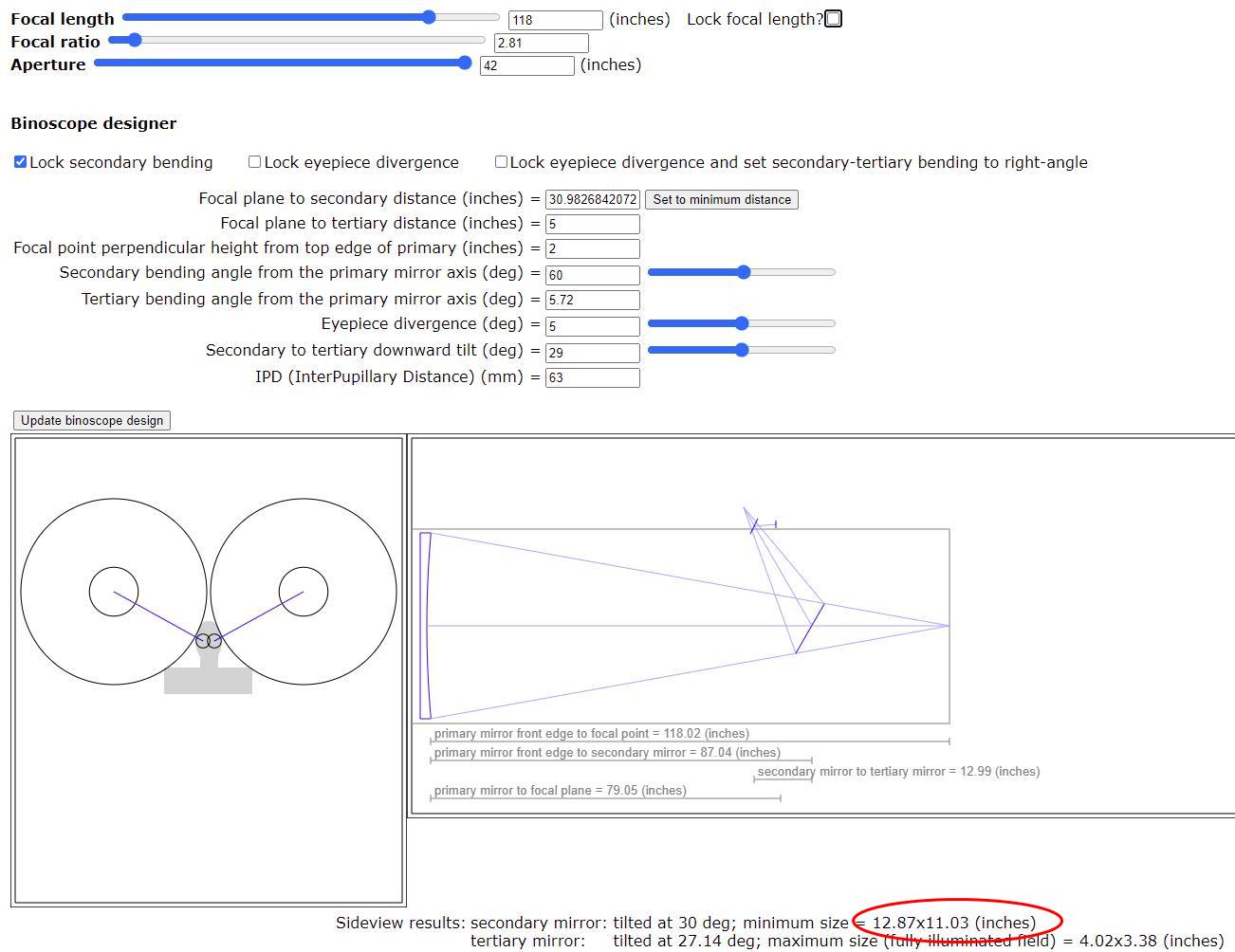
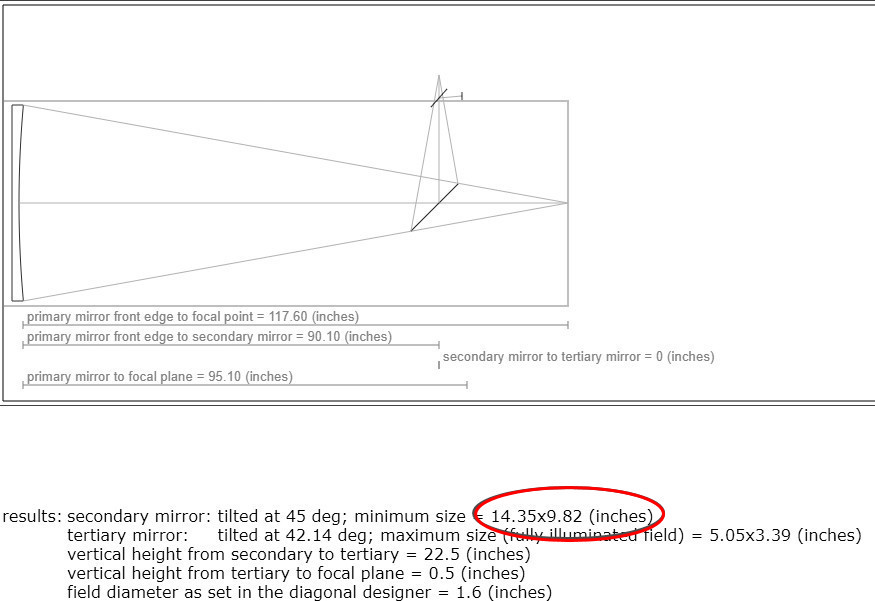
Here is a study of major and minor axis sizes per angle of secondary showing that the smallest major axis size is 13 inches:
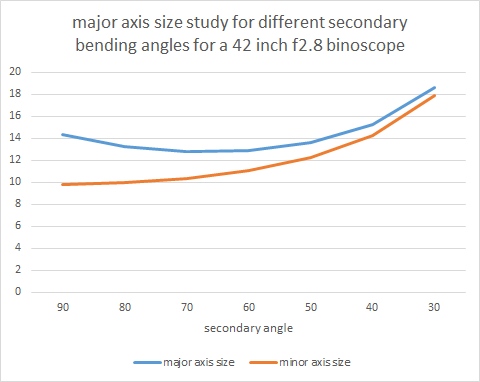
The design issue that worries me most is keeping alignment between the two tube assemblies while I am making tiny pointing adjustments at the eyepieces.
By contrast, the low rider option calls for a secondary that is essentially an 11 inch flat.
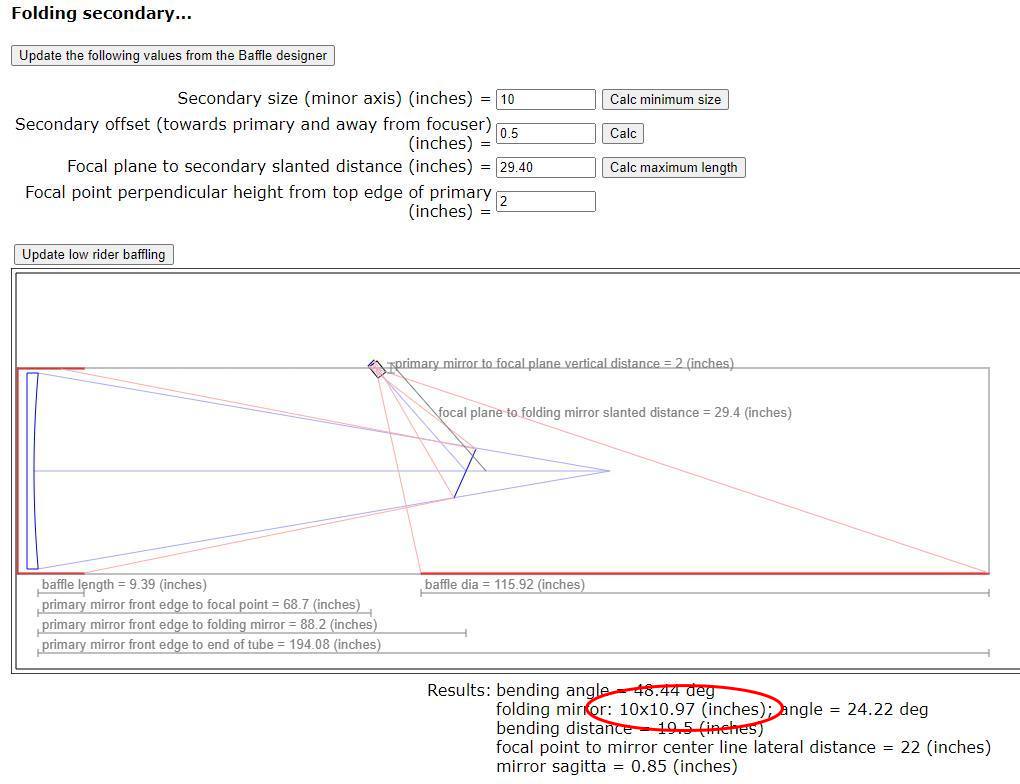
For a standard Newtonian configuration, a diagonal minor axis size as small as 8 inches can work:
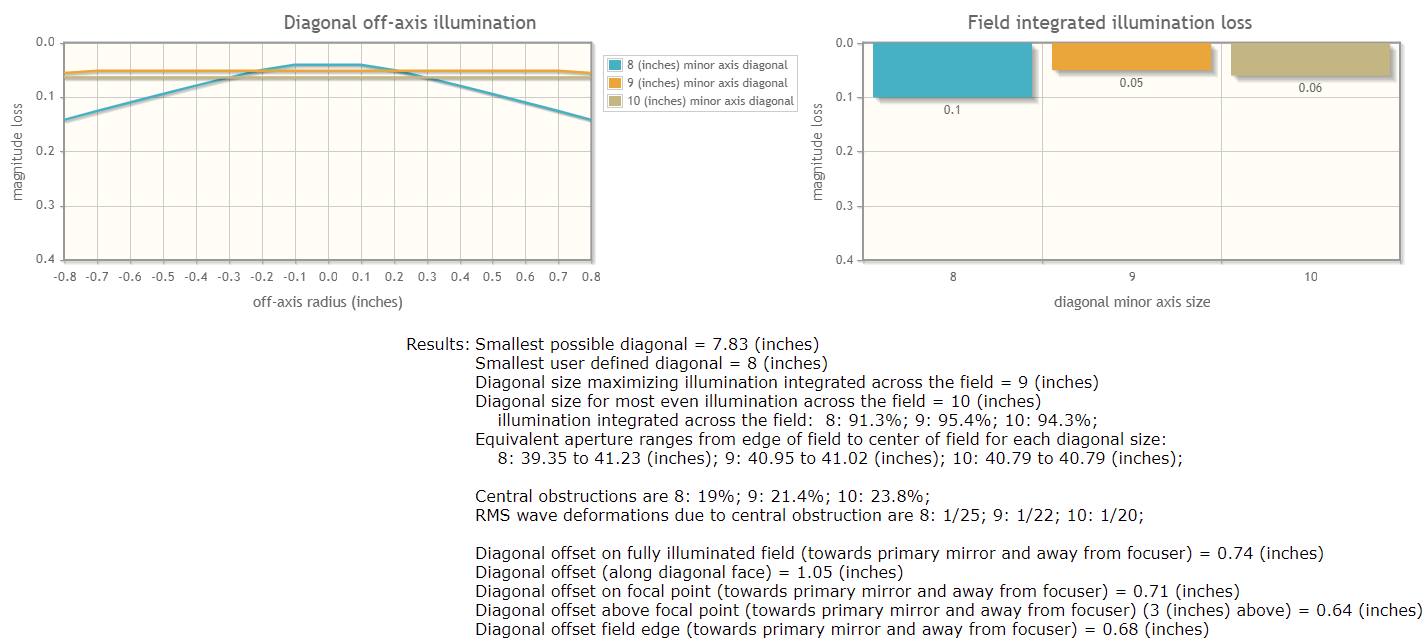
Surprisingly, allowing a large P2 coma corrector intrusion results in a smaller 7 inch diagonal along with less overall obstruction.
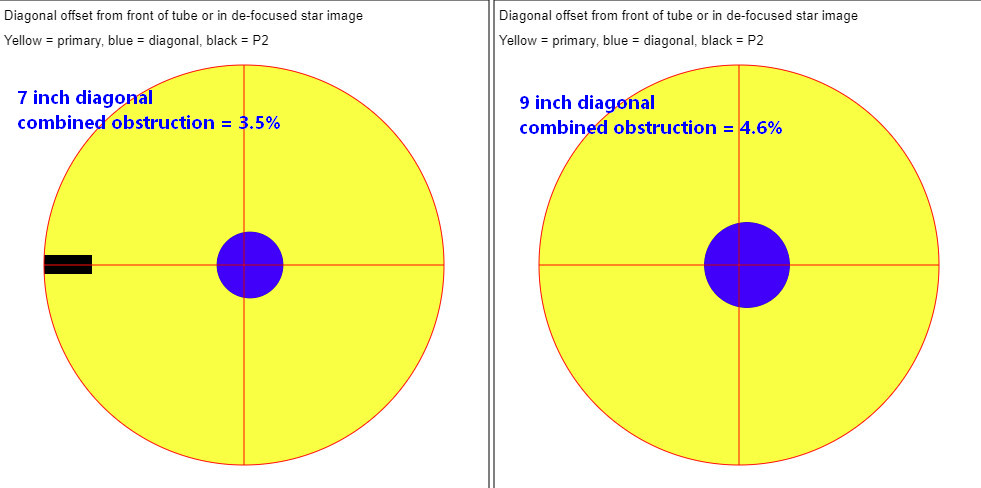
Note that the ES 25mm eyepiece will be limited by my eye's exit pupil.

If the ES 25mm 100 deg eyepiece is used with a non-magnifying coma corrector, the field will be 0.8 degrees.
Here are the etendue or light flux from the standard Newtonian, lowrider and binoscope configurations:

A good night vision device on a large and fast Newtonian with a silvered mirror is astonishing.
Observers at the 2022 Golden State Star Party (GSSP) report that a good NV device with Howard Banich's silvered 30 inch mirror produced stunning views of M16 and the Pillars of Creation. They report that the view looked just like this photo with the 4 meter Mayall telescope (NOIRLab) except that it was in real time.
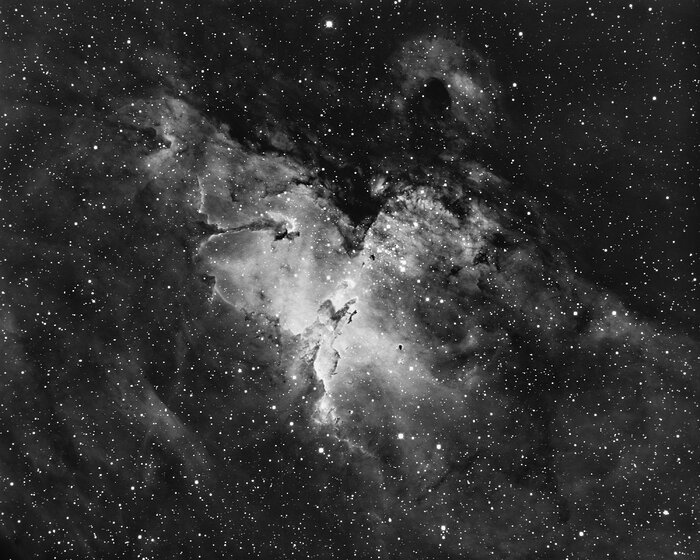
Observing through Howard Banich's 30 inch f2.7, the twin of my mirror, I am blown away with the Night Vision device's views. Take the Pelican Nebula, for example. Visually I barely make out the two black lanes; with the NV the edges of the lanes glow as well as the heads! I grabbed an image from the Wikipedia page then reprocessed it to look like the view through the NV device. Image attribution: By Urmymuse - Own work, CC BY-SA 4.0, https://commons.wikimedia.org/w/index.php?curid=107860278
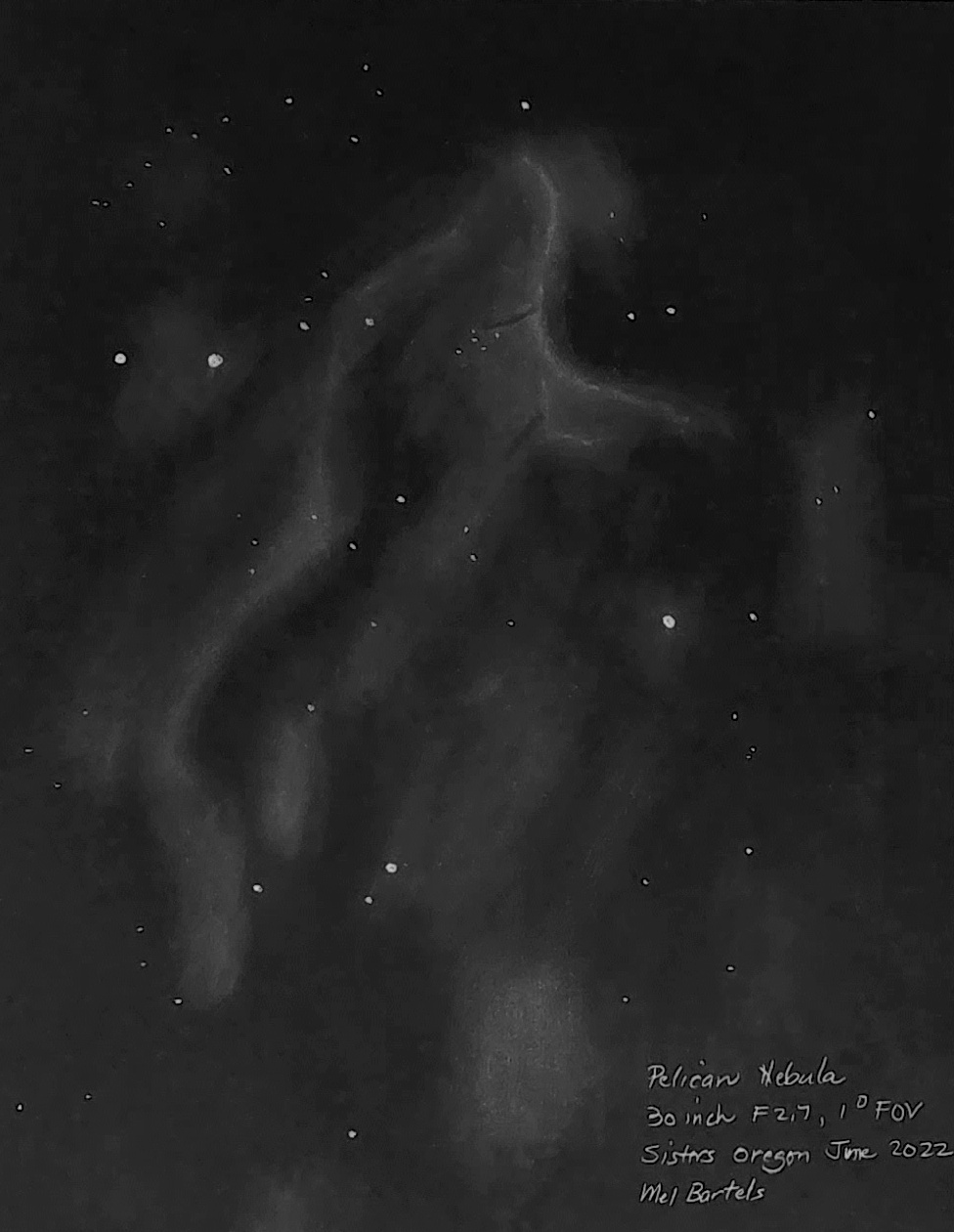
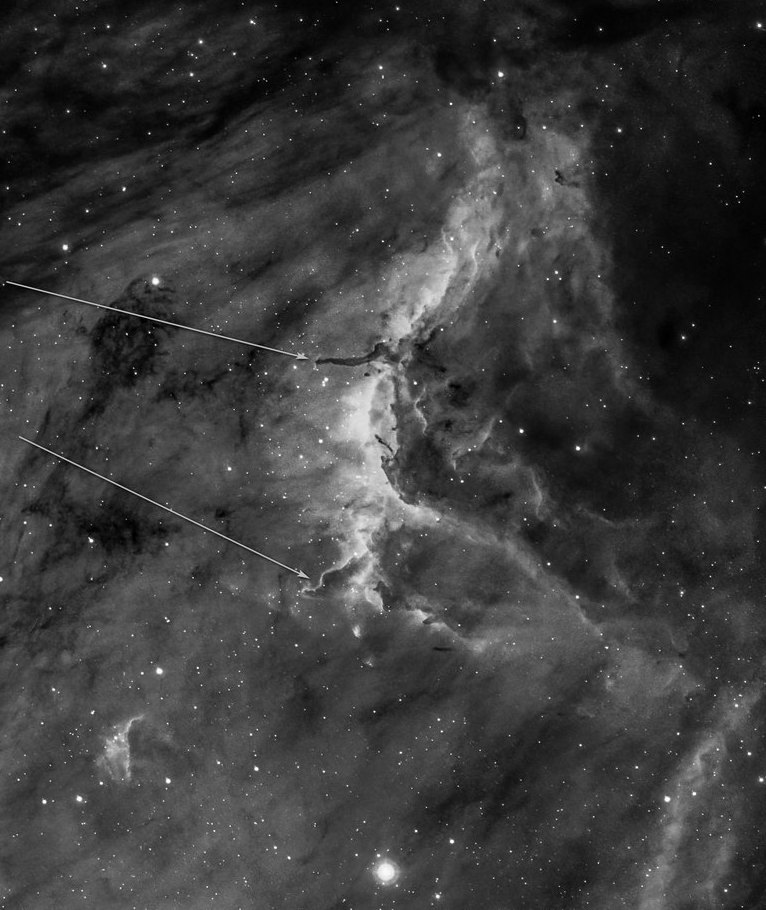
Scaling issues dominate the discussion of 40+ inch [1m+] telescopes. Imagine dealing with a big scope that weighs hundreds of pounds, takes a tall ladder, needs very heavy grinding and polishing tools along with a long testing path to grind, polish and parabolize. Compared to a slightly less ambition size, say a 20 to 30 inch [50 to 76cm], how often will the giant scope be used?

A Cloudy Nights image of Steve Swayze's 40 inch at the Oregon Star Party.
One attractive idea is to fold the light path like this.
The answer is 42, an Oct 2022 presentation for the Altaz Initiative.
A transportation solution should be identified before proceeding with the telescope and mirror.
I built my own machine that can be configured for spin work or for stroke work. I've completed three mirrors, a 25 inch [64cm] and two 30 inchers [76cm]. The machine is designed to handle up to 48 inch glass [1.2m]. For more go here.
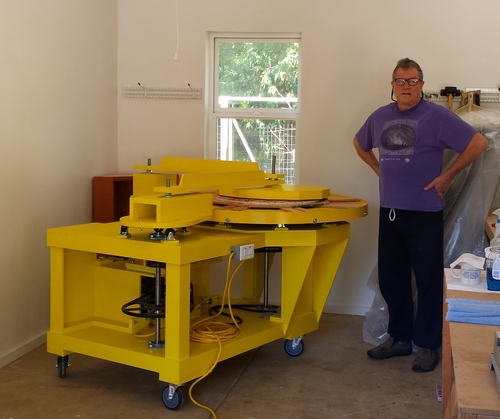
Unlike the 25 inch that weighs 25 pounds [11kg] and the 30 inchers that each weighed 38 pounds [17kg], the 42 inchers weigh 85 pounds each [39kg]. They are also very bulky to lift and carry. I'll need help moving them countless times on and off the grinding and polishing tools.
I added a 54 point mirror cell design to my NewtDesigner.
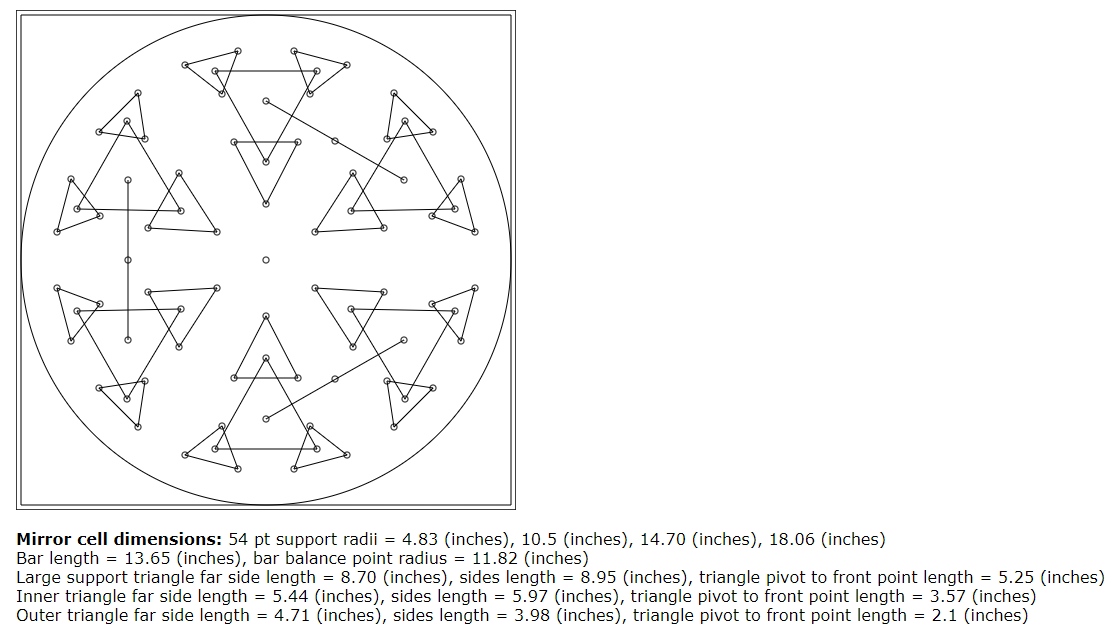
The mirror's sagitta exceeds the blank's thickness, meaning that the back rim of the mirror is not at the mirror's center of gravity. The mirror may tend to bend inward per the diagram below. A potential fix is to lift the mirror up, either at the edge or from the back side - complicated.
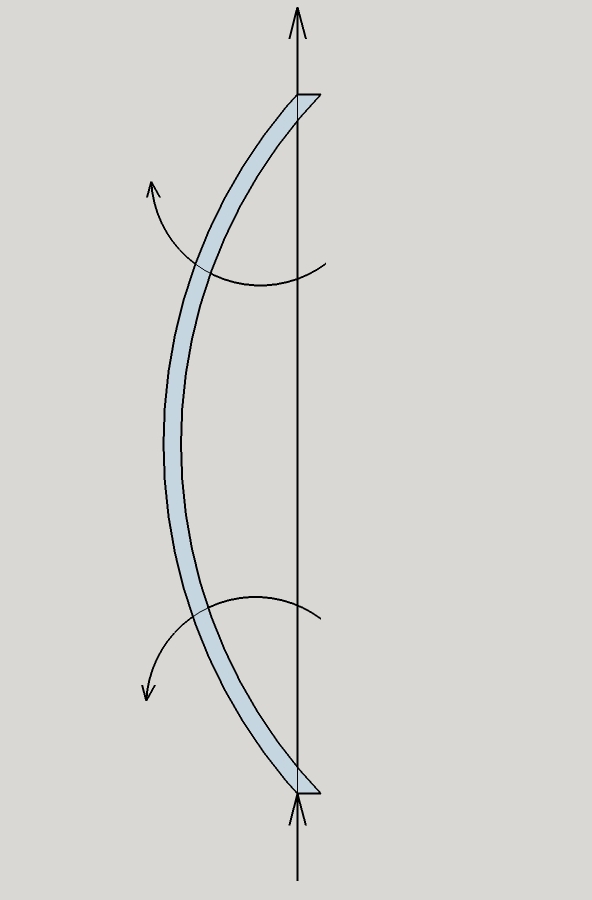
I am taking a couple of years of observing with the 30x5/8 inch [760x16mm] F2.7, making sure I understand how the mirror performs under the stars, particularly thermal issues. Additionally I built a 16.25x3/8 inch [410x10mm] F2.9.
List the good, the bad and the ugly as lessons to learn for the next telescope
The good:
The bad:
The ugly: